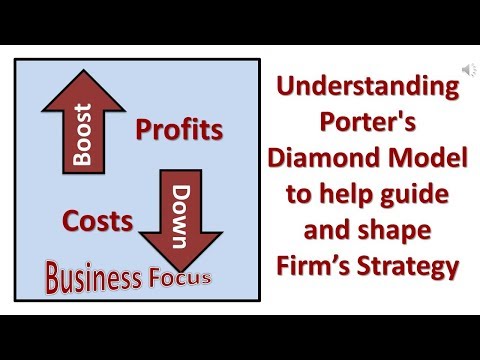Contents:


The haircut is typically expressed as a percentage of the collateral’s market value. For example, a risky stock worth $50 a share may receive a 25% haircut and may be valued at $37.50 if it is used as collateral. Haircuts may consist of positions in stocks, futures, and options on futures of the same underlying asset or highly correlated instruments.
When a trader pledges securities as collateral for a loan, the lender will frequently reduce the value of the assets by a specified percentage (known as the risk-based haircut). When accepting collateral, the Eurosystem does not favour any particular kind of asset, provided it meets its requirements. A haircut appears when a financial institution places a value on a collateral asset that is lower than the requested loan amount. A lender will determine the haircut amount—usually a percentage difference—and it varies by institution and instance. The lender determines the haircut amount by calculating the risk involved. When used in the context of exchange traded products such as stocks, options, or futures, haircut is used interchangeably with the term margin.
current community
Cory is an expert on stock, forex and futures price action trading strategies. Weddings, parties, listening to music, picnics, and haircuts are commonplace. Strategies to erode identities include forcing individuals to surrender all personal possessions, get uniform haircuts and wear standardized clothing. He has several missing teeth, blond hair, of which the length differs due to occasional haircuts. The release marked a change in musical direction for the band and a new image with band members receiving haircuts. Bad haircuts and glasses may be used for the before version while the after version has the computer generated images smiling and wearing a suit.
First Republic Zombie Bank Dismembered, Pieces Handed to JP … – WOLF STREET
First Republic Zombie Bank Dismembered, Pieces Handed to JP ….
Posted: Mon, 01 May 2023 14:46:15 GMT [source]
Her Teaching and research interests include Management subjects, financial management, microfinance and social entrepreneurship. She has 10+ years’ experience of working with Deloitte, Royal Bank of Scotland and SCNL. The video below explainsthe term’s meaning when referring to creditors getting back much less than they are owed. A lower haircut also allows for more leverage and plays an important role in trading. Equity typically refers to shareholders’ equity, which represents the residual value to shareholders after debts and liabilities have been settled. Haircut and margin both refer to the same concept of an asset’s value being arbitrarily reduced for risk mitigation, though they are expressed differently.
But haircut meaning in finances can go up and down in value and central banks may need some time to sell specific assets. A haircut therefore provides a kind of safety buffer against any loss in value and the time it takes to sell the collateral. One example of when haircuts are used is when central banks lend money to commercial banks. In return for the loan, as a form of insurance, the central bank will ask for collateral . However, it will apply a haircut, i.e. a reduction, to the value of this collateral.
In the event collateral is sold to cover the margin call, the lender will have a chance of breaking even. The reduction of value to securities used as collateral in a margin loan. That is, when one places securities as collateral, the brokerage making the loan treats them as being worth less than they actually are, so as to give itself a cushion in case its market price decreases. In Finance, banks and other moneylenders use this term when offering loan facilities to an individual or a firm in exchange for security.
Definition of related term
A sellout is a situation in finance in which investors are forced to sell their assets. A haircut in debt restructuring is yet another unique use of the term “haircut” in finance. Specific to debt restructuring, a haircut is the reduction of outstanding interest payments or a portion of a bond payable that will not be repaid.
This is why assets with a current market value of €1 million are not sufficient to receive a loan of the same amount. Central banks need to be sure that the money they lend will be paid back. Of course, the first line of defence is the agreement with the borrower regarding repayment. But if the borrower fails to repay the loan, the central bank will sell the collateral. It therefore needs to be sure that it will be able to sell the collateral at a price that will cover the amount of the loan.
This condition may arise when a company considers restructuring its debt and negotiates new terms with existing bondholders. To mitigate risk, a lender will implement a haircut on the value of the collateral. By having the true value of the collateral be higher than what the loan is actually issued for, the lender can build in risk mitigation to ensure full recoverability. Both items determine the value of collateral that is often less than the full amount of the collateral or loan.
When you start your investment journey you might encounter the term haircut in share market. So let’s discuss what is haircut in stock market in detail with an example. A risk-based haircut is a critical step in protecting against the possibility of a margin call or a similar type of over-leveraged position. When an investor uses securities as collateral on a loan, the lender will often devalue the securities by a certain percentage (known as the risk-based haircut). If the asset is highly liquid, then it will be easy to sell it quickly without any loss of value. An asset which is much harder to sell for fair market value will carry a larger haircut.
What are haircuts?
The failure of LTCM, which required a bailout of the financial system, resulted in much higher haircut rules in terms of what can be posted as collateral, and how much the haircut has to be. LTCM had basically no haircuts, yet today an average investor buying regular stocks is subject to a 50% haircut when using those stocks as collateral against the amount borrowed on a margin trading account. A haircut can also be used to refer to the difference between the buying and selling price of a stock, bond or derivative contract or any other financial instrument. In this sense, the term haircut is used to express the market maker’s spread. This decreases the chance of a poorly timed margin call or the forced sale of a security at a lower price. The amount of the haircut reflects the perceived risk of loss from the asset falling in value or being sold in a fire sale.
- The only securities that consistently escape a haircut are US government bonds because they are considered free of default risk.
- This pricing model calculates the projected liquidating prices for American-style options.
- The haircut was specified by the stock market, and it was the same for all brokers.
- Thus, the haircut for a loan guaranteed by triple-A rated government bonds will be lower than for a loan collateralized by an equity portfolio.
- An asset which is much harder to sell for fair market value will carry a larger haircut.
One asset could be worth $10,000 but given a haircut of 10%, meaning it’s treated as though it has a value of $9,000. Another asset could be worth $10,000, but given a haircut of 30%, meaning it’s treated as though its value is $7,000. Small bank A wants to borrow $500,000 and puts up assets as collateral to borrow that loan. Big bank B values those assets at $375,000—or 25% less than the loan amount. If you’ve ever had to put something up as collateral to take out a loan—like a home or car, for example—there’s a value placed on that asset.
Example of Haircut in Share market
The term is believed to have been coined because it allows market makers to trade at a thin spread. In the context of exchange traded products then the term can be used interchangeably with “margin”. A general rule of thumb is that the lower the haircut is the safer the loan is, and the higher the haircut is the riskier the loan is. Rehypothecation is when financial firms use client assets as collateral. Screaming women with identikit haircuts whoop her every flex and step.
Customers who have pledged shares and have paid back the loan amount or cleared their ledger debits and related dues can unpledge their stocks from the lenders. Following the un pledging of securities, they can be transferred, and the lender’s rights to the pledge will be terminated. To summarize, any security with a higher level of volatility and price unpredictability will naturally have higher haircuts when used as collateral. In both the Indian and global contexts, the haircut for stocks is typically 50%. The sole risk is that interest rates will rise, resulting in a high collateral value and a low haircut. This is not the case with equity markets, which are extremely volatile, resulting in excessive haircuts.
By devaluing the assets provided as collateral, the lender gets a cushion, a measure of risk protection to defend against market value drops. Market makers and retail traders face a haircut in the form of the difference between the buying and selling price of an asset or financial instrument. Market makers can profit from such spreads since they typical have lower transaction costs compared to retail traders. A risk-based haircut reduces the recognized value of an asset to determine an acceptable level of margin or financial leverage when an investor buys or continues to own the asset. In other words, haircuts attempt to measure the chance of an asset falling below its current market value and establish a sufficient buffer to protect the investor against a margin call. A margin call could force the investor to deposit more money into their brokerage account or sell assets held in the account.
Silicon Valley Bank Collapse Threatens VC Industry With $500B … – Bloomberg
Silicon Valley Bank Collapse Threatens VC Industry With $500B ….
Posted: Fri, 24 Mar 2023 07:00:00 GMT [source]
In general, a haircut refers to a situation in which we use shortening techniques to remove the superfluous edge and leave the best possible result. “Haircut” since has been extended to a number of other financial contexts, whenever it is desirable to show that some securities are being valued for some purpose at a discount. The Structured Query Language comprises several different data types that allow it to store different types of information… The offers that appear in this table are from partnerships from which Investopedia receives compensation. Investopedia does not include all offers available in the marketplace.

The riskier an asset is, the higher the applied haircut will be.Haircut is commonly used in many financial operations where collateral is being used, like for example securities lending. A lender needs to assess the ability and the value that they can recover the loan if the borrower defaults on it. If a lender feels that they can sell the collateral for its market value without any issue, the haircut will be low. On the other hand, if they foresee difficulty in selling the collateral and particularly at its face value, the higher the haircut will be. In financial markets, a haircut refers to a reduction applied to the value of an asset. For example, if an asset – such as holdings of a particular government bond – is worth €1 million but is given a haircut of 20%, it means it is treated as though it has a value of only €0.8 million.
Fs and ft are the haircut floors for the securities that are net lent and net borrowed respectively. 2 For the purposes of this calculation, collateral that is called by either counterparty can be treated collateral received from the moment that it is called . You need to login in to your stock broker account and request for unpledging of the stocks. You can do it yourself as well if your broker provides the unpledge button against the stocks which are pledged. In the aftermath of the Satyam scam in 2009, India’s securities market regulator, Sebi, has created requirements on mandatory declaration of these borrowings.
The haircut was specified by the stock market, and it was the same for all brokers. By maintaining your stocks as collateral, you can get exposure/margin against them in your demat account. For the purposes of determining the collateral value, the haircut in stock market is the amount by which the trading value of your pledged securities is lowered. In the financial markets, a haircut was utilised to cover such risks. These threats include things like variables that could affect the valuation of the collateral if the lender needs to sell it if the borrower defaults on the loan.
This provides the brokerage firm a larger protection in case the market price of the securities decreases. The larger the haircut, the lower the value of the securities put up as collateral. If after examination, a lender determines that there are high risks involved in loaning to a borrower, they might increase the haircut amount compared to a lower risk asset or loan. Highly volatile securities as well as those that experience price uncertainty will carry larger haircuts.

